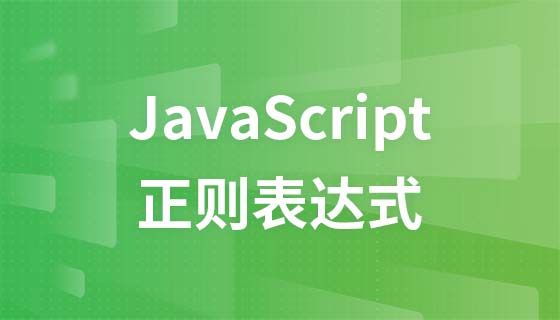TypeScript函数体中如何高效判断参数类型?
时间:2024-11-19 19:19:00 254浏览 收藏
从现在开始,努力学习吧!本文《TypeScript函数体中如何高效判断参数类型?》主要讲解了等等相关知识点,我会在golang学习网中持续更新相关的系列文章,欢迎大家关注并积极留言建议。下面就先一起来看一下本篇正文内容吧,希望能帮到你!

typescript 函数体中判断参数类型的技巧
typescript 中,我们可以定义接口来表示不同的数据类型。在本文中,我们将探讨如何在函数体中判断参数的类型,从而实现类型收窄,进行更精细的类型检查。
使用谓词函数
一种方法是编写谓词函数来手动检查类型。谓词函数返回的是 value is sometype 形式的值。例如,我们可以定义如下函数:
// 判断对象是否是 person
function isperson(o: unknown): o is person {
return typeof o.name === 'string' && typeof o.age === 'number';
}在函数体中,我们可以使用此函数来判断参数的类型:
function test(some: person | animal) {
if (isperson(some)) {
// some 现在是 person
} else if (isanimal(some)) {
// some 现在是 animal
}
}使用 io-ts 库
io-ts 库提供了一个更强大的工具来进行类型检查。它可以定义运行时检查工具并将其转换为 typescript 类型:
import * as t from 'io-ts';
const person = t.type({
name: t.string,
age: t.number
});
type person = t.typeof<typeof person>;
const animal = t.type({
food: t.string,
kind: t.string
});
type animal = t.typeof<typeof animal>;
function test(some: person | animal) {
if (person.is(some)) {
console.log('现在 some 是 person', some);
} else if (animal.is(some)) {
console.log('现在 some 是 animal', some);
}
}使用 class
在 typescript 中,class 既是类型也是值。因此,我们可以使用 class 来创建对象,并使用 instanceof 来检查原型链以判断类型:
class Person {
name: string;
age: number;
}
class Animal {
food: string;
kind: string;
}
function test(some: Person | Animal) {
if (some instanceof Person) {
console.log('现在 some 是 Person', some);
} else if (some instanceof Animal) {
console.log('现在 some 是 Animal', some);
}
}上述方法都可以帮助我们在 typescript 函数体中判断参数的类型,从而实现类型收窄并进行更精细的类型检查。
今天关于《TypeScript函数体中如何高效判断参数类型?》的内容介绍就到此结束,如果有什么疑问或者建议,可以在golang学习网公众号下多多回复交流;文中若有不正之处,也希望回复留言以告知!
相关阅读
更多>
-
502 收藏
-
501 收藏
-
501 收藏
-
501 收藏
-
501 收藏
最新阅读
更多>
-
427 收藏
-
394 收藏
-
314 收藏
-
198 收藏
-
175 收藏
-
204 收藏
-
209 收藏
-
468 收藏
-
499 收藏
-
376 收藏
-
189 收藏
-
461 收藏
课程推荐
更多>
-

- 前端进阶之JavaScript设计模式
- 设计模式是开发人员在软件开发过程中面临一般问题时的解决方案,代表了最佳的实践。本课程的主打内容包括JS常见设计模式以及具体应用场景,打造一站式知识长龙服务,适合有JS基础的同学学习。
- 立即学习 543次学习
-

- GO语言核心编程课程
- 本课程采用真实案例,全面具体可落地,从理论到实践,一步一步将GO核心编程技术、编程思想、底层实现融会贯通,使学习者贴近时代脉搏,做IT互联网时代的弄潮儿。
- 立即学习 516次学习
-

- 简单聊聊mysql8与网络通信
- 如有问题加微信:Le-studyg;在课程中,我们将首先介绍MySQL8的新特性,包括性能优化、安全增强、新数据类型等,帮助学生快速熟悉MySQL8的最新功能。接着,我们将深入解析MySQL的网络通信机制,包括协议、连接管理、数据传输等,让
- 立即学习 500次学习
-

- JavaScript正则表达式基础与实战
- 在任何一门编程语言中,正则表达式,都是一项重要的知识,它提供了高效的字符串匹配与捕获机制,可以极大的简化程序设计。
- 立即学习 487次学习
-

- 从零制作响应式网站—Grid布局
- 本系列教程将展示从零制作一个假想的网络科技公司官网,分为导航,轮播,关于我们,成功案例,服务流程,团队介绍,数据部分,公司动态,底部信息等内容区块。网站整体采用CSSGrid布局,支持响应式,有流畅过渡和展现动画。
- 立即学习 485次学习
